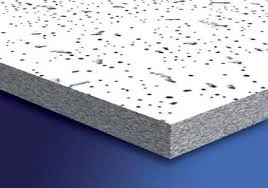- Afrikaans
- Albanian
- Amharic
- Arabic
- Armenian
- Azerbaijani
- Basque
- Belarusian
- Bengali
- Bosnian
- Bulgarian
- Catalan
- Cebuano
- Corsican
- Croatian
- Czech
- Danish
- Dutch
- English
- Esperanto
- Estonian
- French
- German
- Greek
- Hindi
- Indonesian
- irish
- Italian
- Japanese
- Korean
- Lao
- Malay
- Myanmar
- Norwegian
- Norwegian
- Polish
- Portuguese
- Romanian
- Russian
- Serbian
- Spanish
- Swedish
- Thai
- Turkish
- Ukrainian
- Uzbek
- Vietnamese
pro . 10, 2024 16:48 Back to list
ceiling tie wire
Understanding Ceiling Tie Wire A Critical Component in Construction
In the construction industry, every material and tool has its importance, and while some components may appear insignificant at first glance, they play vital roles in ensuring safety and structural integrity. One such component is ceiling tie wire, an essential element used in various construction and electrical applications. This article aims to explore the purpose, types, uses, and best practices associated with ceiling tie wire.
What is Ceiling Tie Wire?
Ceiling tie wire is a type of wire used to support and secure ceiling structures. It is often employed to hold suspended ceilings in place, ensuring they are adequately supported and do not collapse or sag over time. This wire comes in various materials, like galvanized steel, stainless steel, or other alloys, providing durability and resistance to corrosion, which is particularly important in environments exposed to moisture or varying temperatures.
Types of Ceiling Tie Wire
There are several types of ceiling tie wire available in the market, each tailored for specific applications. The most common types include
1. Galvanized Tie Wire This is perhaps the most widely used type in construction due to its affordability and resistance to rust and corrosion. The galvanization process involves coating the steel wire with zinc, which protects it from environmental elements.
2. Stainless Steel Tie Wire For applications where corrosion resistance is paramount, stainless steel tie wire is the go-to choice. It is more expensive than galvanized wire but offers exceptional durability and strength, making it ideal for high-humidity environments or areas near the coastline.
3. Soft and Hard Tie Wire Tie wire also comes in soft and hard varieties. Soft wire is easier to manipulate and is often used for temporary applications or in situations where the wire may need to be repositioned. Hard wire, on the other hand, is typically used for permanent installations due to its rigidity and strength.
Uses of Ceiling Tie Wire
The primary function of ceiling tie wire is to support and secure ceiling systems. Here are some common uses
- Suspended Ceilings Ceiling tie wires are critical in the installation of suspended ceilings, helping to maintain the height and alignment of the ceiling grid system.
ceiling tie wire

- Electrical Work In electrical installations, tie wire is used to secure conduit and other electrical fixtures. This ensures that they are firmly held in position, reducing the risk of damage or disconnection.
- HVAC Ducts Ceiling tie wire is also used to hang and secure ductwork in HVAC systems, providing a stable support that prevents sagging over time
.- Structural Reinforcement In some cases, tie wire can be used to reinforce the structure of the ceiling itself or to attach it to other structural elements, ensuring added safety.
Best Practices for Using Ceiling Tie Wire
Using ceiling tie wire may seem straightforward, but there are several best practices that construction professionals should follow to ensure safety and efficacy
1. Follow Manufacturer Guidelines Always adhere to the manufacturer’s recommendations regarding wire gauge and applications. Using the appropriate type and thickness can significantly affect the safety and durability of the installation.
2. Proper Tools Utilize the right tools for bending, cutting, and securing tie wire. Wire benders and cutters ensure clean cuts and bends, preventing damage to the wire.
3. Regular Inspections Periodically inspect tie wires for signs of wear, corrosion, or fatigue. Addressing any issues early can prevent larger problems in the future.
4. Training Workers should be trained on the proper techniques for installing and securing tie wire, as improper installation can lead to structural failure.
5. Safety Precautions Always wear appropriate personal protective equipment (PPE) when working with tie wire to avoid injuries from sharp wire ends or flying debris.
Conclusion
Ceiling tie wire may not be the most glamorous component in construction, but its significance cannot be overstated. By providing essential support for ceilings and other structures, it plays an integral role in creating safe and resilient environments. Understanding the types, uses, and best practices associated with ceiling tie wire ensures that construction professionals can execute their projects successfully and maintain the highest safety standards.
-
Mineral Fiber Ceiling Tiles Embossed Surface PatternNewsAug.05,2025
-
Mineral Fiber Board Xingyuan Vision for Better SpacesNewsAug.05,2025
-
Drop Down Ceiling Tile Office Use FitNewsAug.05,2025
-
PVC Gypsum Ceiling White Base ColorNewsAug.05,2025
-
Access Panel on Ceiling Xingyuan Integrity EthicNewsAug.05,2025
-
Ceiling Trap Doors Fire Resistant DesignNewsAug.05,2025







